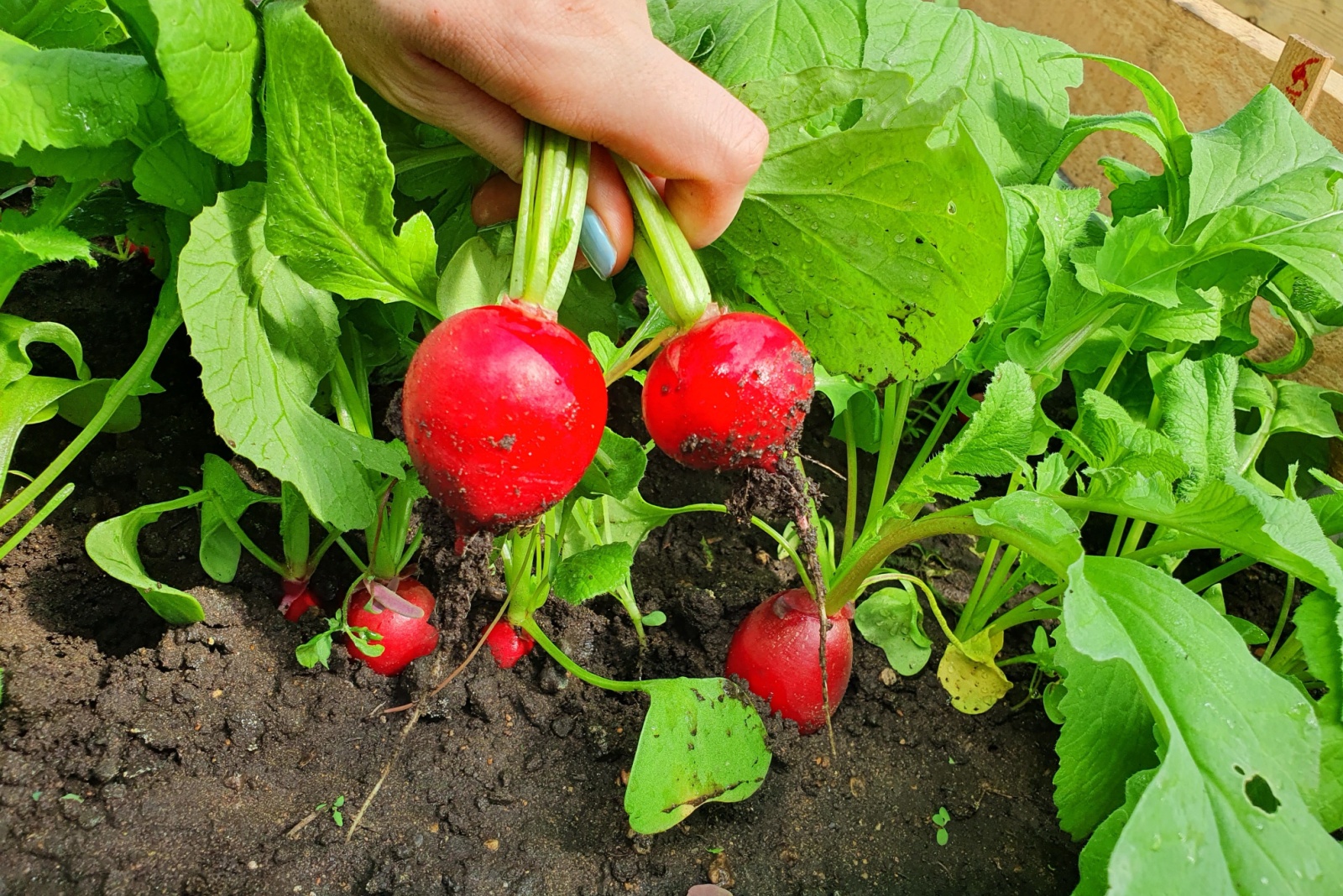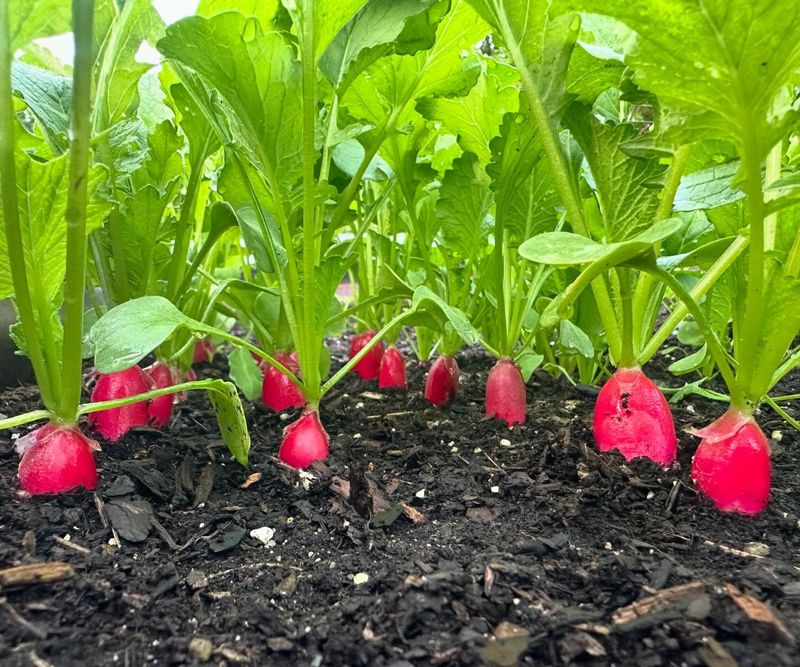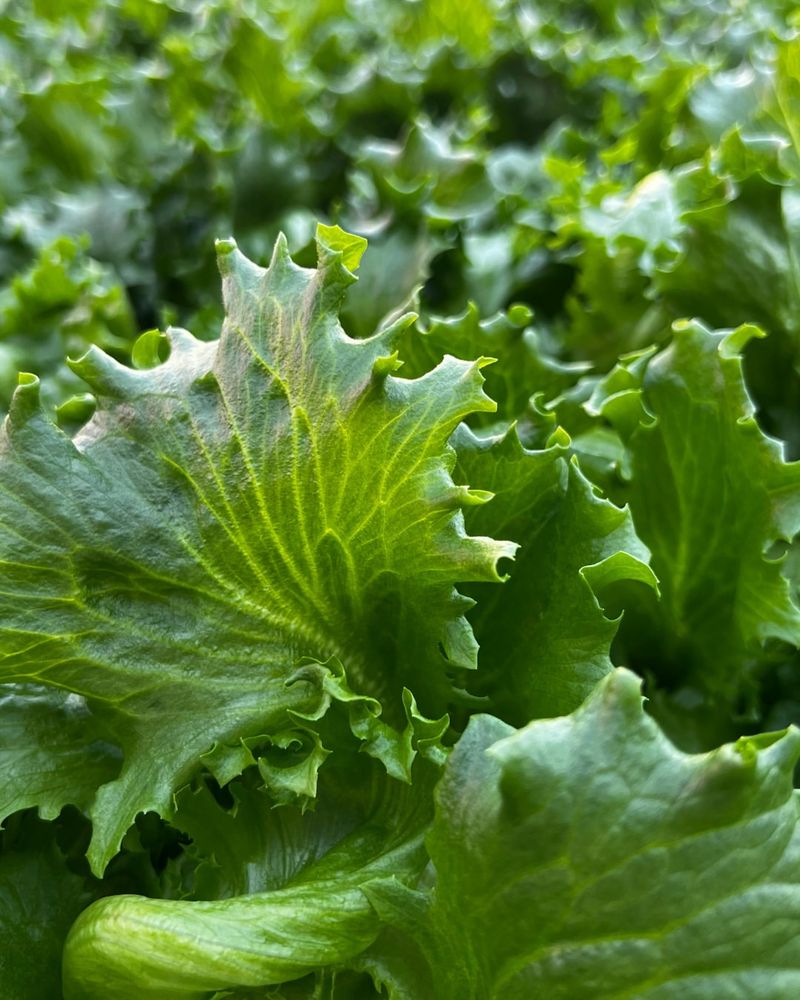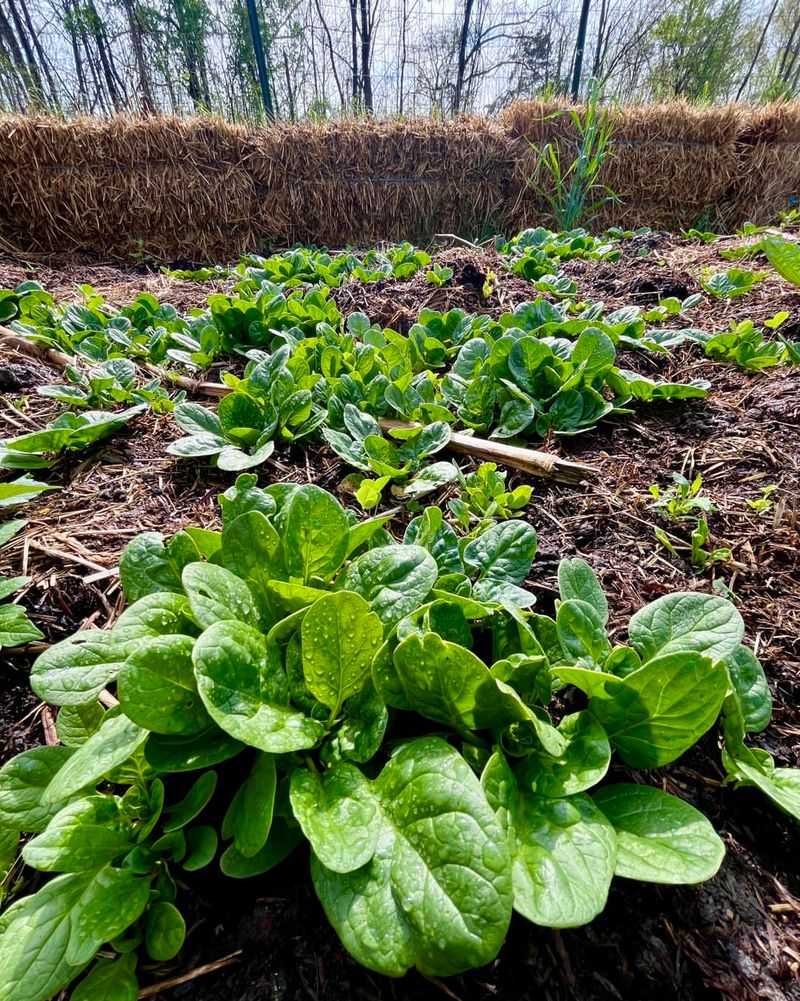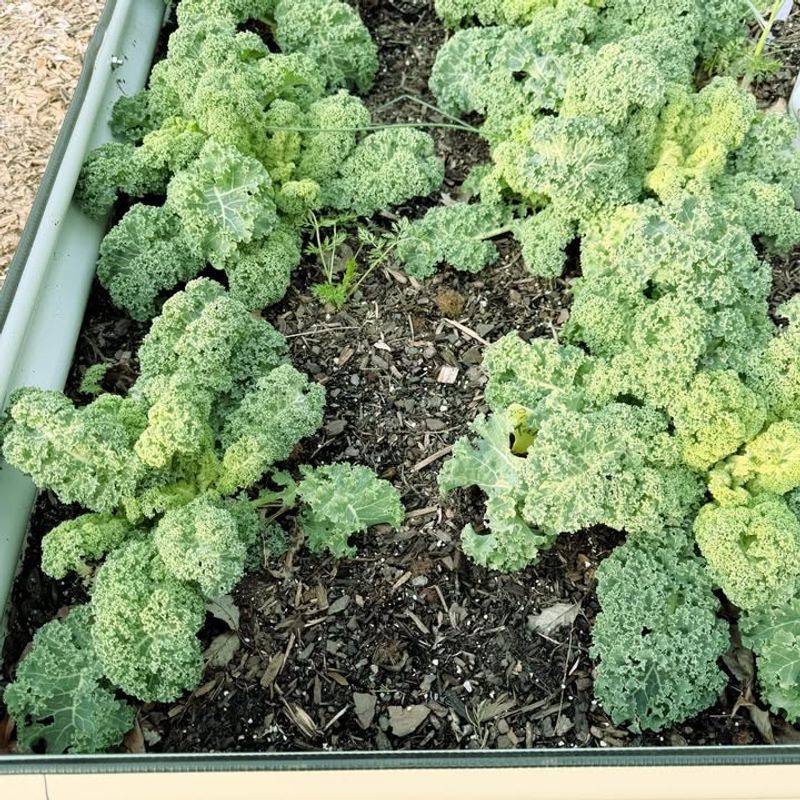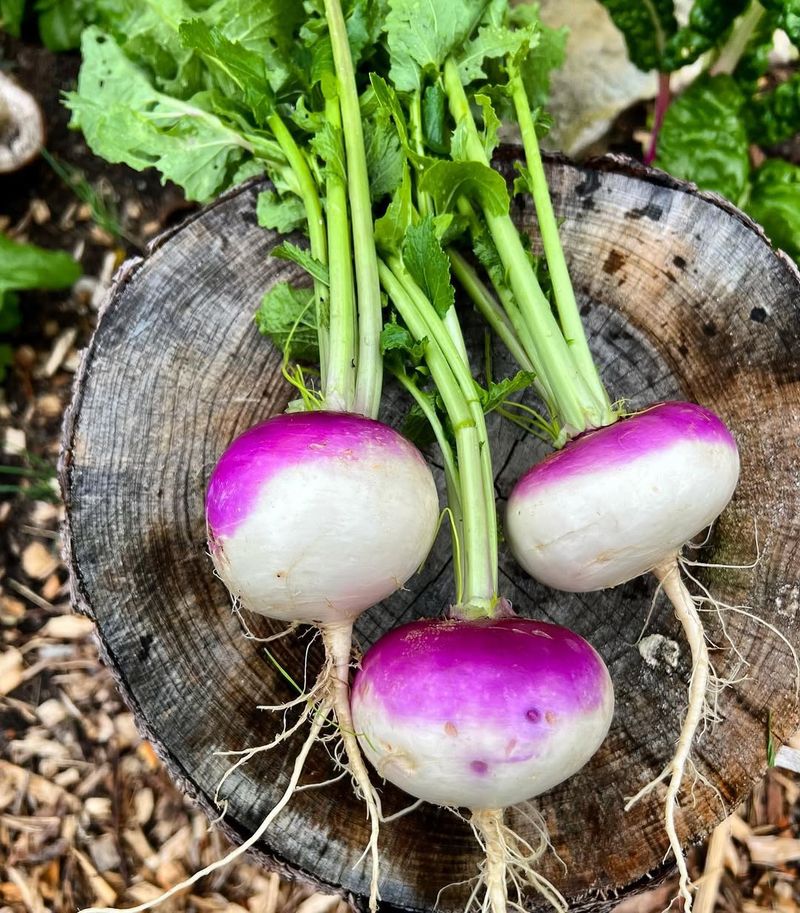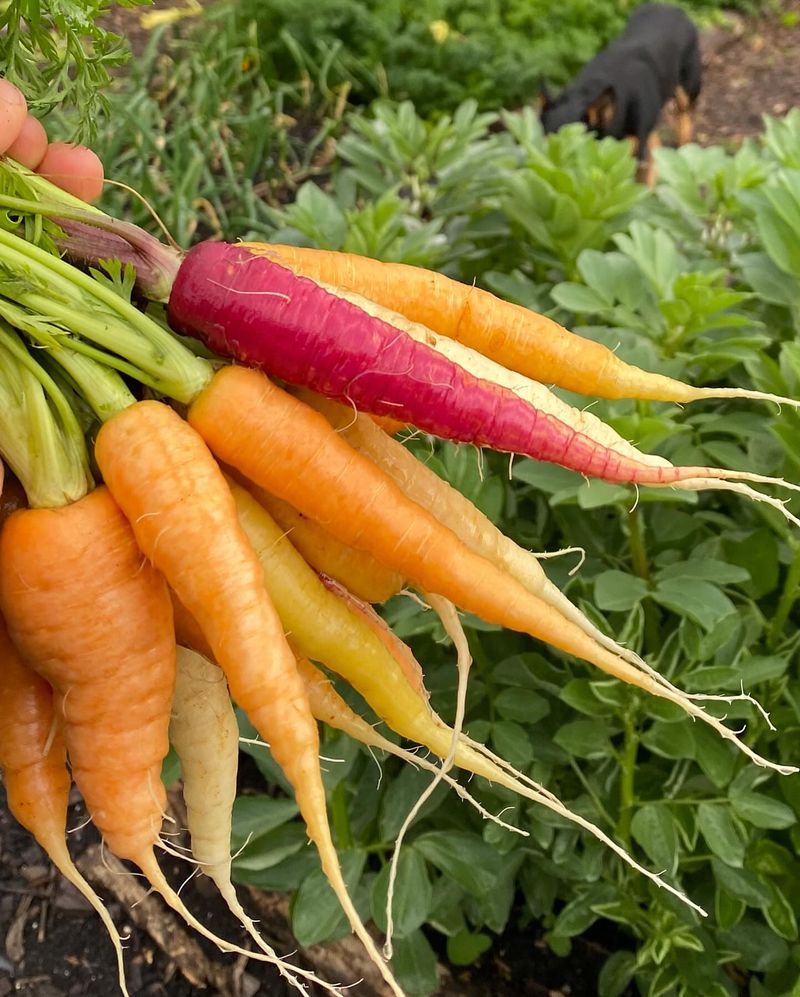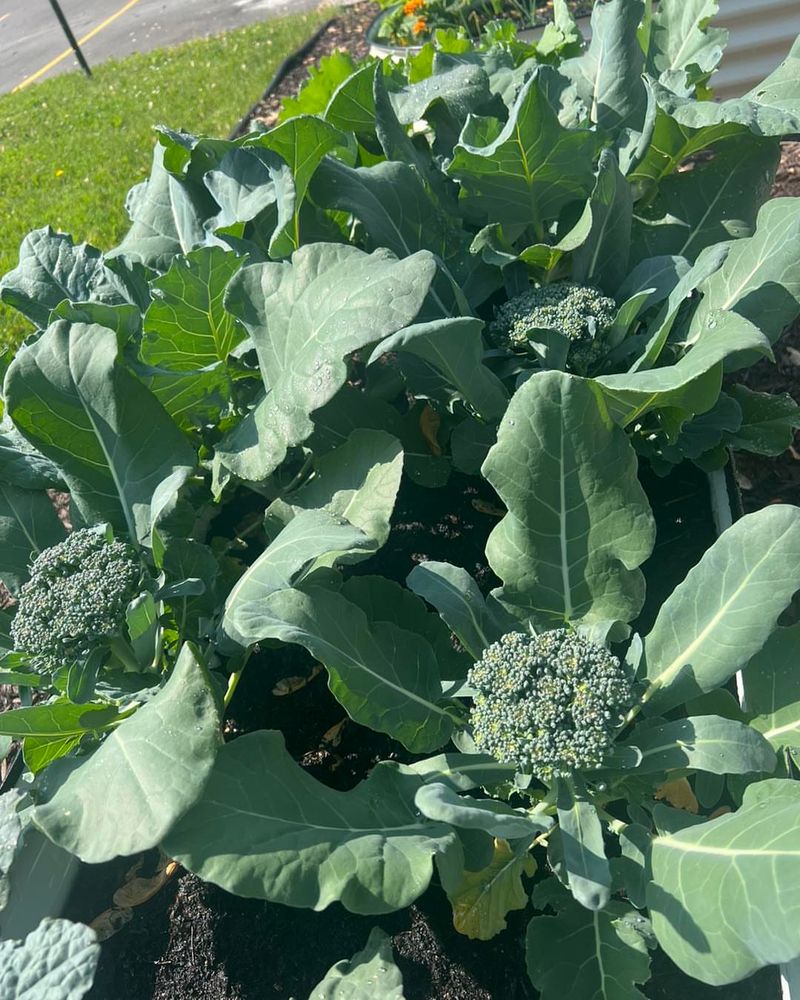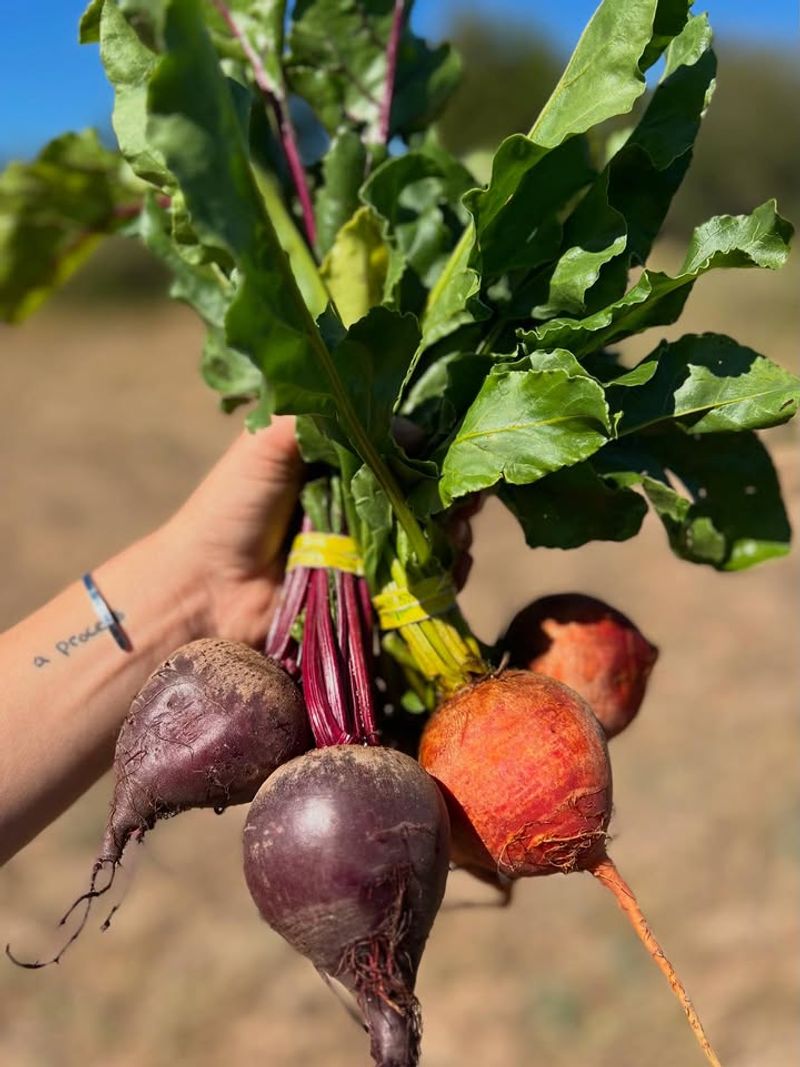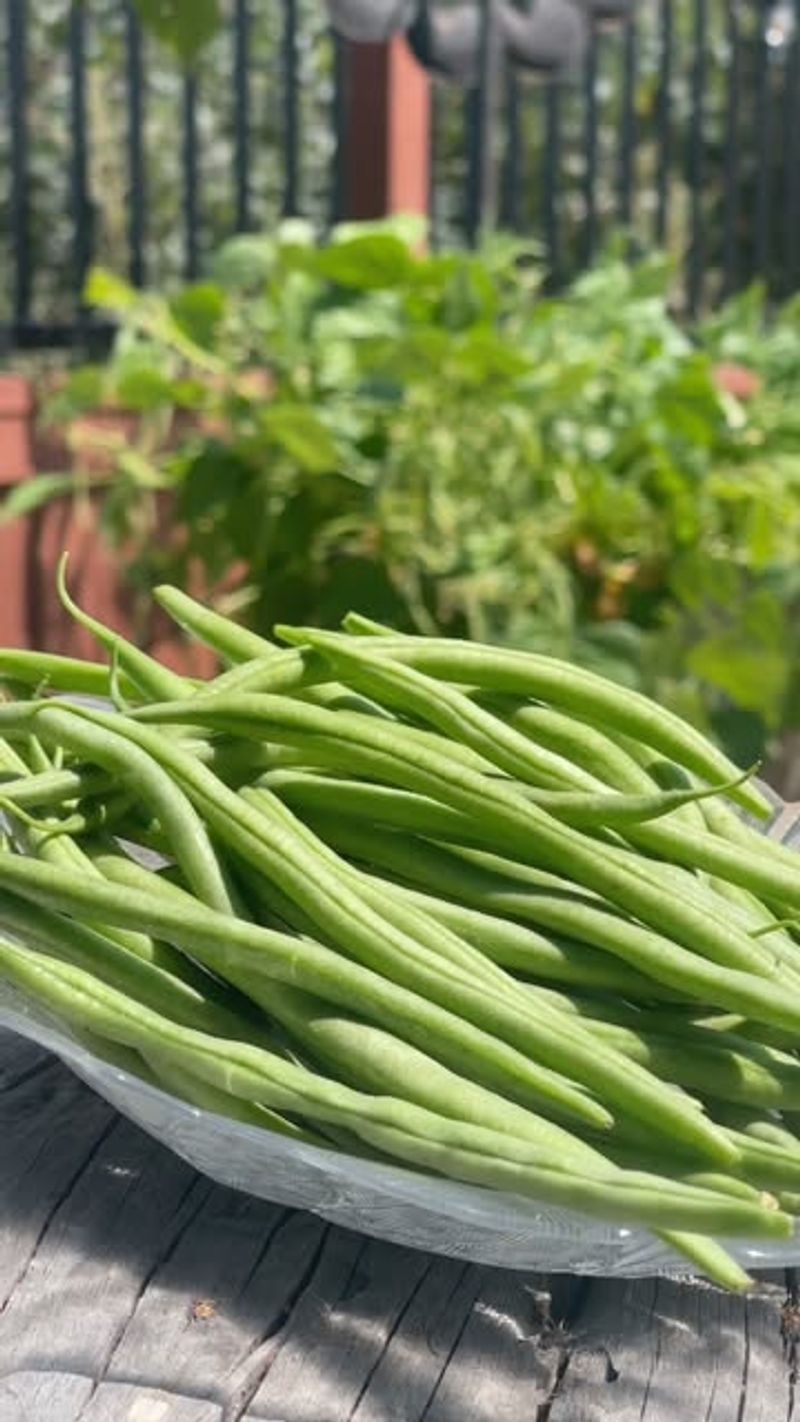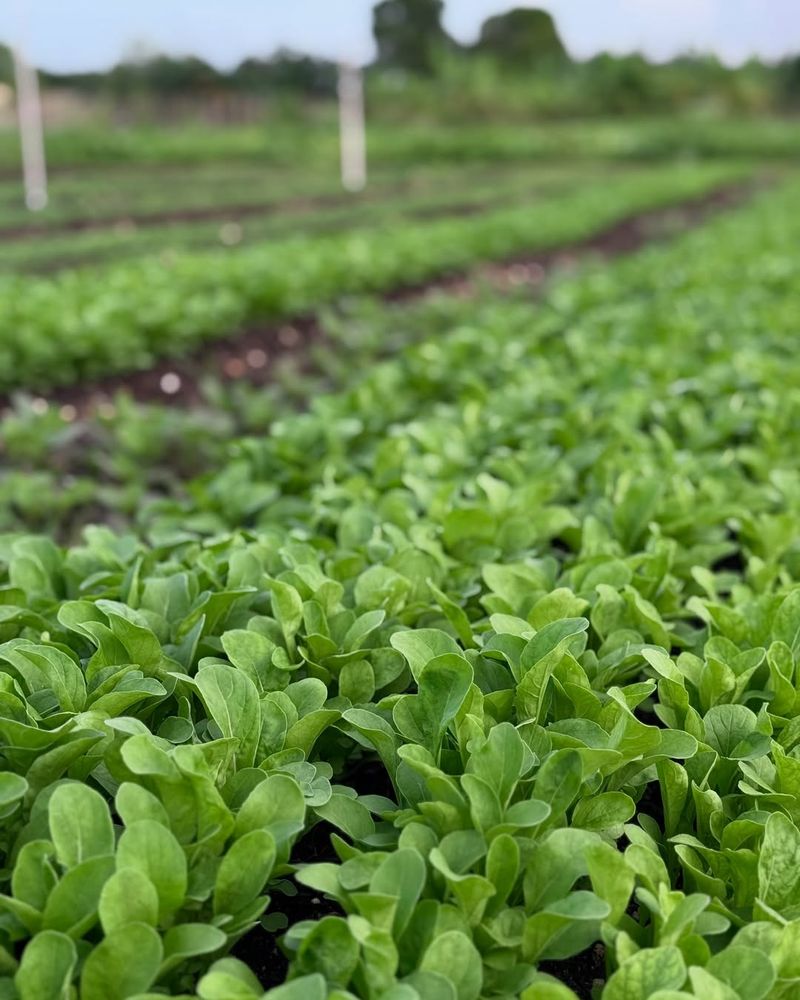Fall gardening in North Carolina offers a second chance to grow fresh vegetables when summer crops wind down. The cooler temperatures and consistent rainfall create perfect conditions for certain quick-maturing plants.
With the right choices, you can enjoy homegrown produce well into autumn and sometimes even winter.
1. Radishes
Radishes sprout faster than almost any vegetable you can plant, making them ideal for impatient North Carolina gardeners. Most varieties mature in just three to four weeks from seed to harvest.
Plant them directly in the ground during late August or early September. They prefer cooler weather, which actually makes them taste sweeter and less spicy.
Space seeds about an inch apart and keep the soil moist. Pull them up as soon as they reach full size, or they might become woody and unpleasant to eat.
2. Lettuce
Crisp, homegrown salad greens taste nothing like store-bought lettuce, and fall is actually the best time to grow them. Hot summer temperatures make lettuce bitter and cause it to bolt quickly.
Choose leaf lettuce varieties that you can harvest continuously by picking outer leaves. They mature in about 45 days, though you can start snipping baby greens much sooner.
Plant seeds every two weeks for a steady supply throughout North Carolina fall. Water regularly and watch for slugs, which love tender lettuce leaves.
3. Spinach
Packed with nutrients and incredibly versatile in the kitchen, spinach thrives when temperatures drop below 70 degrees. Summer heat causes this leafy green to flower and turn bitter almost immediately.
Seeds germinate best when soil temperatures stay between 50 and 70 degrees. Plant them about half an inch deep and one inch apart in rows.
Baby spinach leaves become ready to harvest in roughly 30 days, while full-sized plants need about 45 days. Mulch around plants to keep soil cool and moist during warmer North Carolina fall days.
4. Kale
Known as a superfood for its nutritional benefits, kale actually becomes sweeter after experiencing light frost. Unlike many vegetables, cold weather improves rather than damages its flavor.
Plant seeds or transplants in late summer for a fall harvest. Kale grows steadily and can handle temperatures well below freezing, often surviving into December or January.
Harvest outer leaves first, allowing the center to keep producing. Each plant can provide fresh greens for months if you pick carefully and protect it during North Carolina hard freezes.
5. Turnips
Both the roots and greens from turnips are edible, giving you two vegetables from one plant. Many North Carolina cooks consider turnip greens a traditional delicacy, especially when cooked with a bit of bacon.
Seeds sprout quickly in cool soil and reach harvest size in about 40 to 60 days. Plant them in early fall for best results, spacing seeds two inches apart.
Pull turnips when roots reach two to three inches across for the sweetest flavor. Larger ones can become tough and overly strong-tasting, though the greens remain delicious.
6. Carrots
Crunchy, sweet carrots taste noticeably better when grown in cool weather rather than summer heat. Fall-planted carrots develop more sugar content and less bitterness.
Choose shorter varieties that mature in 50 to 60 days if you want a harvest before winter arrives to North Carolina. Loose, sandy soil produces the straightest roots, while clay causes funny shapes.
Thin seedlings to about two inches apart once they sprout. Carrots can tolerate light frosts and actually improve in flavor after cold nights, so leave them in the ground until needed.
7. Broccoli
Growing your own broccoli means picking it at peak freshness when the florets are tight and flavorful. Store-bought versions often sit for days, losing taste and nutrients.
Start with transplants rather than seeds to speed up the process. Plant them in late summer, spacing them about 18 inches apart in rich soil.
Heads typically form in 60 to 80 days from transplanting. Harvest the main head while buds remain tight and green, then watch for smaller side shoots that continue producing for weeks afterward.
8. Beets
Earthy and naturally sweet, beets provide both nutritious roots and tasty greens for your kitchen. Kids who claim they hate beets often change their minds after trying freshly harvested ones.
Plant seeds directly in the garden during late summer in North Carolina. Each wrinkled seed actually contains several seeds, so expect multiple sprouts from each spot.
Thin seedlings to three inches apart and use the thinnings in salads. Roots become ready in 50 to 70 days, though you can harvest baby beets earlier for tender, mild flavor.
9. Bush Beans
Quick-producing bush beans give you fresh snap beans without the hassle of trellises or poles. They grow as compact bushes rather than climbing vines, making them perfect for smaller North Carolina gardens.
Plant seeds in early August for a fall harvest before the first frost. They need about 50 to 60 days of warm weather to produce pods.
Pick beans when pods snap easily but before seeds inside bulge noticeably. Regular harvesting encourages plants to keep producing more pods until cold weather finally stops them.
10. Arugula
Peppery and slightly spicy, arugula adds bold flavor to salads and sandwiches. This Mediterranean green has become increasingly popular in American gardens and restaurants.
Seeds germinate rapidly and plants mature in just 30 to 40 days. Cool North Carolina fall temperatures prevent the bitter, overly spicy taste that develops in summer heat.
Harvest young leaves for milder flavor, or wait for larger leaves if you prefer more peppery bite. Plant new seeds every few weeks to maintain a continuous supply throughout autumn and early winter.

